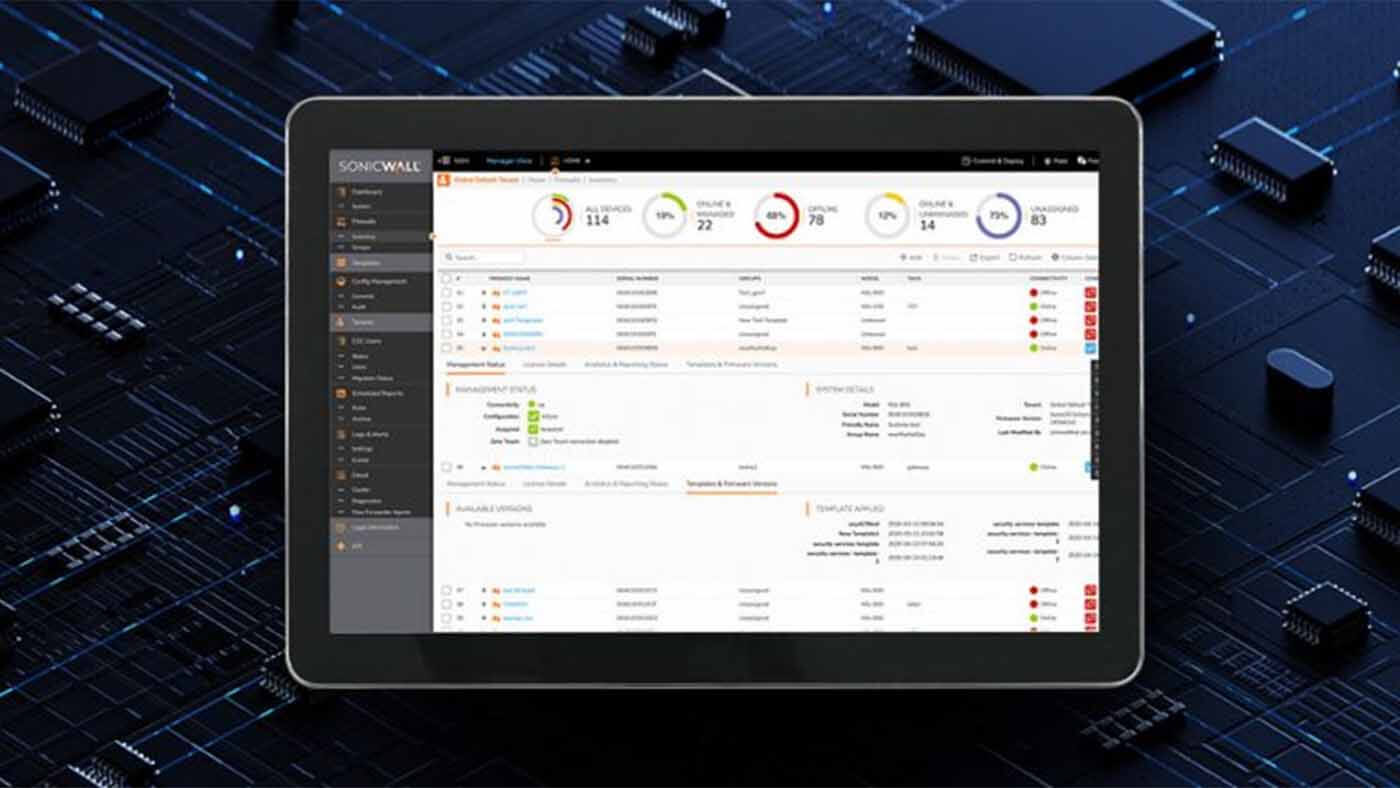Learn how SonicWall's NSM 2.3.5 productivity reporting tools monitor and control internet usage effectively while enhancing overall productivity and cybersecurity.
Most employees make productive use of their work hours. But regardless of whether work takes place in the office or at home, some non-business-related “unproductive” time is inevitable. How can admins tell when a usage of a particular app or website crosses the line from “productivity-boosting breaks” to “productivity-busting distraction”?
In 2021, SonicWall introduced new productivity reporting tools for Network Security Manager (NSM). With Version 2.3.5, we’re empowering you to monitor productivity across your entire ecosystem more easily than ever.
With the release of NSM 2.3.5, we’re debuting a number of new features — including risky user activity telemetry and new tenant- and group-level Productivity Reports — to maximize admins’ awareness of users’ online activities. These features are designed to guide admins as they implement productive and safe internet access and usage policies that everyone in the organization can positively agree to and support.
When deploying a network, an administrator goes through three distinct phases: plan, deploy and monitor. It is only during the monitoring phase, however, that the administrator learns whether the network or its users are behaving as anticipated. Based on the collected monitoring data, network policies must be fine-tuned to achieve the goals or objectives laid out during the planning phase.
In the network planning phase, administrators take stock of how users will use the network’s resources. But even in cases where this estimate is spot-on, usage patterns change over time, and existing policies must be modified or new policies put in place to move network usage back into alignment with the plan.
This cycle of continuous monitoring and refining of network policies is crucial when it comes to controlling the usage of resources like the internet due to the dynamic nature of this usage. The internet hosts a continuous flow of new applications and new threats, and novel applications can become mainstream with breathtaking speed.
In addition to being continuously monitored, internet usage should be collated across internet gateways, including those in branch offices and other geographically separated locations. The resulting data will offer a complete picture of an organization’s internet usage pattern, and will highlight the most efficient means of ensuring internet usage continues to center primarily around business objectives.
For example, let’s say that, while looking at the internet usage report, an administrator discovers an uptick in unproductive internet usage over the past few weeks, as some users in different office locations have begun spending a significantly larger portion of office hours on unproductive internet activities such as streaming services or social media.
Further analysis of the URLs accessed by these users revealed that the web applications showing increased usage had always been allowed on the network — however, prior to the introduction of a popular new feature or functionality, this hadn’t been a concern for productivity. Quickly detecting such changes in internet usage patterns is only possible by continuous monitoring.
Without it, unproductive usage of internet resources can continue to result in negative business impacts — and in the case of things like social media, which can open a workforce up to social engineering attacks, it can also result in increased cybersecurity risk for the organization.
Internet usage activities can be controlled by configuring content-based filtering of Content Filtering Services (CFS) policies. These policies can be used to define which internet activities are permissible for network users and which are restricted.
Another way to restrict non-business-related internet usage in an organization is by configuring bandwidth management or traffic-shaping policies. Bandwidth management helps the administrator to control out-going WAN traffic, either for everyone or on a per-IP basis. CFS policy basically defines what is permitted and what is restricted, while bandwidth management specifies how much WAN bandwidth is allocated to a specific IP address.
Both of these options represent powerful mechanisms for admins to manage usage of internet resources. Regardless of which one — or which combination of the two — an admin chooses to deploy, the increase in visibility these methods offer will pay dividends in both productivity and security.
Would you like to explore what SonicWall has to offer? We're passionate about helping you stay safe online. Take a look here and let us help you find the solution to best fit you or your company.

